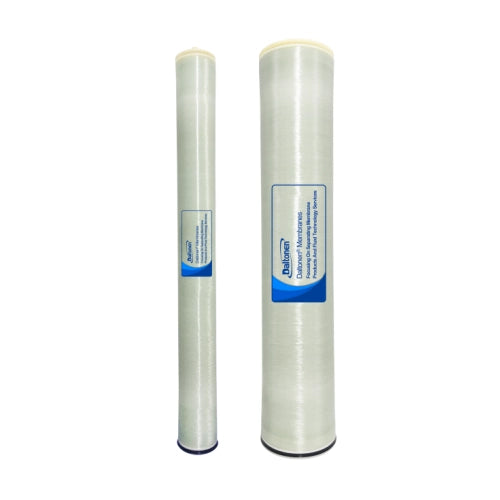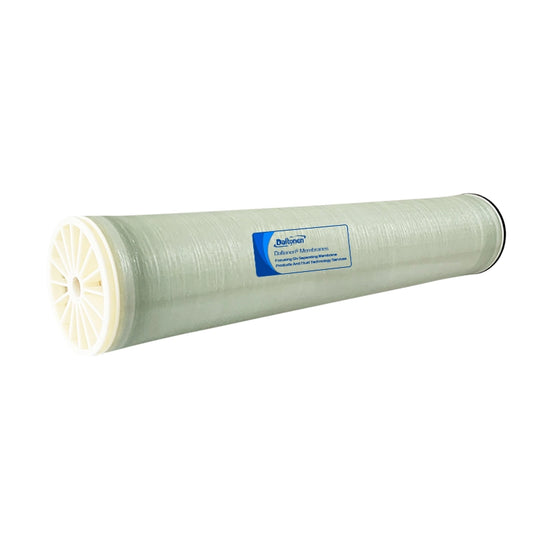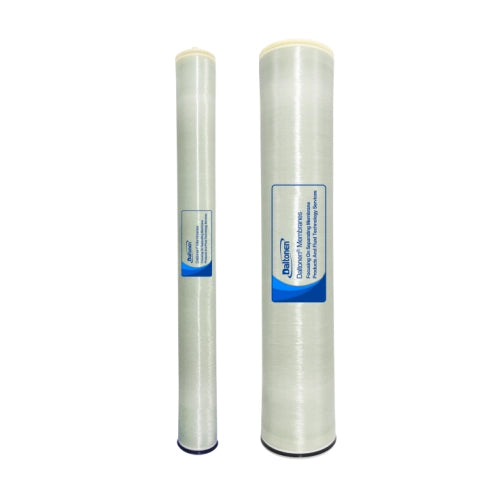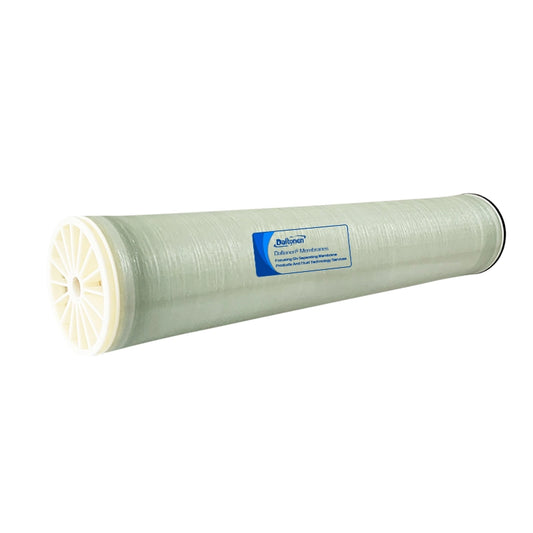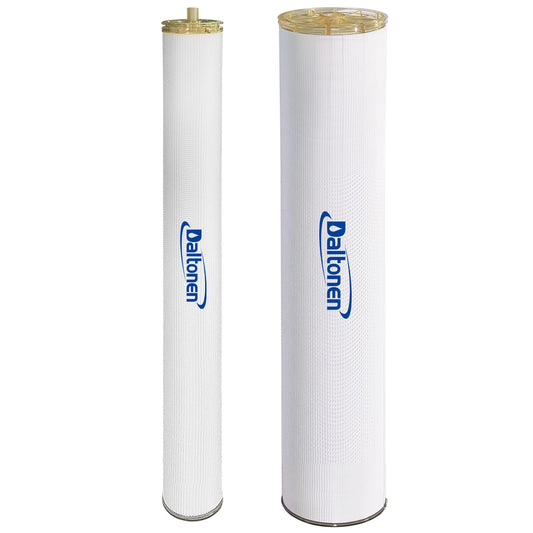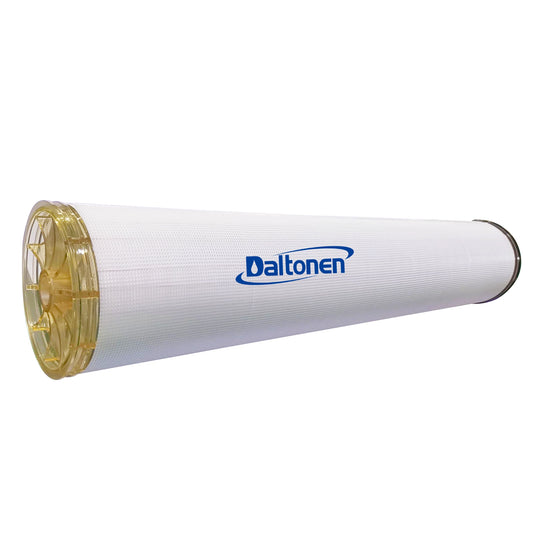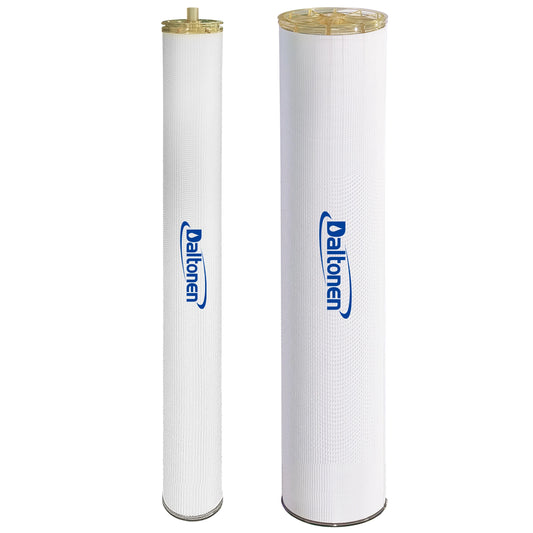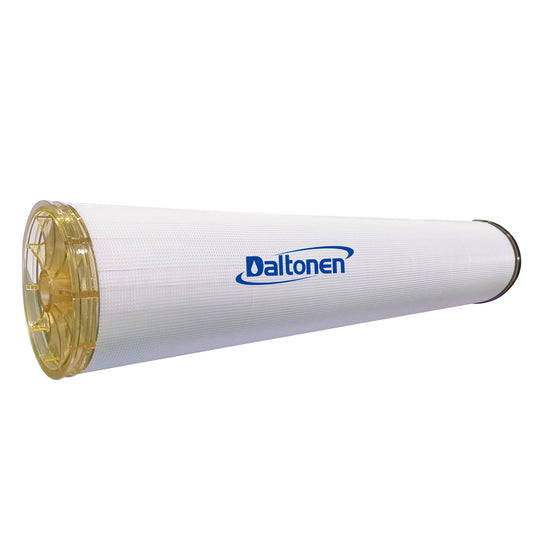Process Design Scheme for a Nanofiltration Membrane System Targeting 400 Dalton Small Molecule Retention
1.0 Design Basis and Objectives
-
Primary Objective: Precisely retain target products with a molecular weight ≥ 400 Da (e.g., antibiotics, peptides), while allowing salts (e.g., NaCl) and small molecule impurities (MW < 200 Da) to permeate.
-
Separation Mechanism: Based on size exclusion (sieving) and the Donnan effect (charge repulsion).
-
Design Feed Solution:
-
Target product concentration: 1-5 wt%
-
Primary impurities: Inorganic salts (NaCl, (NH₄)₂SO₄), solvents (ethanol), small molecule intermediates.
-
-
System Recovery Rate: > 90% (for target product)
-
Desalination Rate: > 95% (for monovalent salts like NaCl)
2.0 Process Flow Design
The system employs Diafiltration (DF) as the core operating mode to achieve efficient separation and purification of the target product. The flowchart below clearly illustrates the continuous purification process.
flowchart TD
subgraph FeedPrep[Feed Solution Preparation]
A[Feed Stock Tank] --> B[Preheater<br>Temp Control 25±2°C];
B --> C[Precision Filter<br>0.5-1.0μm absolute rating];
end
subgraph DiapFiltration[Diafiltration Core Unit]
C --> D[Diafiltration Media Tank<br>RO Water/Buffer];
D --> E[Media Feed Pump];
E --> F[Recirculation Tank];
C --> G[Feed Pump];
G --> F;
F --> H[High-Pressure Recirculation Pump];
H --> I[Nanofiltration Membrane Module<br>MWCO 200-300 Da];
I -- Retentate --> F;
I -- Permeate --> J[Waste Tank<br>Contains salts/impurities];
end
subgraph Concentration[Final Concentration & Product Recovery]
F -- Upon reaching target purity --> K[Concentration Mode];
K --> L[Final Concentrate<br>High-Purity Product];
end
subgraph CIP[Cleaning & Maintenance]
M[CIP Cleaning System] --> I;
end

Step-by-Step Process Explanation:
-
Feed Solution Preparation:
-
Preheating: Stabilize the feed temperature to 25±2°C via a heat exchanger. Temperature affects viscosity and membrane flux and must be tightly controlled.
-
Pre-filtration: Use cartridge filters with an absolute rating of 0.5-1.0 μm to remove all particulates that could scratch the membrane surface. This is a critical step for protecting the expensive NF membranes.
-
-
Diafiltration Process:
-
Purpose: To continuously remove small molecule salts and impurities from the system by adding diafiltration media (e.g., pure water) while maintaining a constant volume in the recirculation tank. The target product is retained by the membrane, achieving efficient desalting and purification.
-
Operation:
-
The system starts with an initial pre-concentration step to concentrate the target product.
-
Then it switches to Diafiltration Mode: The media feed pump adds diafiltration media at a constant rate, and the NF system produces permeate at the same rate.
-
Diafiltration Volumes: Typically, 5-10 tank volumes of diafiltration media are required. Impurity concentration decreases exponentially with the number of diavolumes.
-
-
-
Final Concentration:
-
When the permeate conductivity or TOC reaches a preset target (indicating sufficient impurity removal), media addition stops, and the system switches to Final Concentration Mode.
-
Only permeate is produced, reducing the volume in the recirculation tank and further increasing the target product concentration to the final required level.
-
-
Product Recovery & Cleaning:
-
Use compressed air or diafiltration media to flush the membrane system and pipelines, maximizing product recovery.
-
Immediately perform CIP (Clean-In-Place) using specific cleaning agents (e.g., NaOH, HNO₃, ethanol) to restore membrane flux.
-
3.0 Key Design Parameters and Equipment Selection
|
Parameter / Equipment |
Professional Requirements & Specifications |
|---|---|
|
Nanofiltration Membrane Selection |
Molecular Weight Cut-Off (MWCO) 200-300 Da tight nanofiltration membrane. Preferred Models: e.g., DuPont FilmTec™ NF270 (MWCO ~200-300 Da) or equivalent. The membrane surface is typically negatively charged, aiding in the repulsion of like-charged ions. |
|
Operating Pressure |
1.0 - 2.5 MPa. The optimal pressure must be determined experimentally to balance flux and rejection. Excessively high pressure can cause membrane compaction and flux decline. |
|
Cross-flow Velocity |
≥ 1.0 m/s. A high velocity creates turbulence, mitigating concentration polarization and membrane fouling, which is key to maintaining stable flux. |
|
Materials of Construction |
All wetted parts must be 316L stainless steel or higher grade. Contact surfaces should be electropolished (EP) to prevent product adsorption and contamination. |
|
Pumps |
The high-pressure recirculation pump must be a sanitary multistage centrifugal pump or diaphragm pump with low pulsation and corrosion resistance. The media feed pump can be a precision metering pump. |
|
Instrumentation & Control |
Online conductivity meter (monitors desalination), pH meter, temperature sensor, pressure sensors. Use PLC + HMI control for programmable, automated diafiltration operation. |
4.0 Anti-fouling and Process Optimization Strategies
-
pH Adjustment: Adjust the feed pH based on the isoelectric point (pI) of the target product to keep it away from the pI. This increases the molecular charge, enhances rejection via the Donnan effect, and reduces membrane surface adsorption.
-
Temperature Control: Operate at the highest temperature tolerable by the product (e.g., 30-35°C) to reduce viscosity and increase flux. Strict control is needed for heat-sensitive materials.
-
Cleaning Protocols:
-
Routine Cleaning: 0.1% NaOH + 0.1% EDTA solution to remove organic foulants and metal ions.
-
Thorough Cleaning: 0.5% HNO₃ solution to remove inorganic scale.
-
Sterilization/Sanitization: For biological products, use 1% NaHSO₃ or 70% ethanol solution.
-
5.0 Scheme Summary
The NF system designed herein for 400 Da small molecule retention offers core advantages:
-
High Selectivity: Achieves efficient separation of the target product from small molecule impurities based on precise MWCO membrane selection.
-
Gentle Processing: Ambient temperature operation without phase change, making it particularly suitable for heat-labile bioactive substances.
-
Continuous Operation: The diafiltration mode enables continuous desalting, significantly more efficient than traditional dilution-concentration methods.
-
Easily Scalable: Linear scale-up based on membrane area ensures good process reproducibility from lab to production scale.
Critical Note: Prior to full-scale implementation, comprehensive membrane screening and process development studies are essential to determine the optimal membrane type, operating pressure, diafiltration volumes, and other key parameters for the specific feed mixture.
